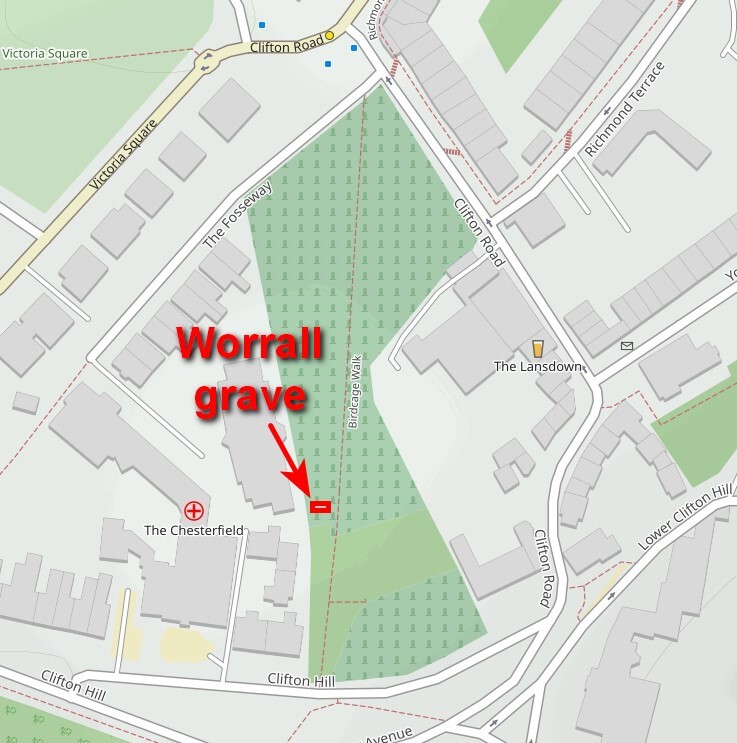Among the many Indian army officers buried in St Andrew’s Churchyard, the most senior is General Henry Lechmere Worrall, who lies close to the south west boundary alongside Catherine, his first wife. Despite rising to the highest military rank, Henry Worrall never saw active service. He did, however, attract a certain amount of notoriety.
Born in Bristol in 1798, Henry was the second son of barrister Samuel Worrall and his wife Elizabeth. Initially commissioned as an Ensign in the HM 6th Regiment of Foot in June 1815, Henry found himself on half pay by the beginning of 1816 and decided to seek his fortune with the East India Company. By 1818 he had secured a cadetship in the Bengal Army and in August the following year was posted as a Cornet in the 1st Bengal Light Cavalry.
Shortly after his arrival in Calcutta, Henry joined the Governor General’s Body Guard, then in 1822 he married Catherine Barron Bruce, the twenty year old widow of Robert Bruce, a Lieutenant in the 1st Native Infantry. The shortage of suitable army wives in India meant that widows quickly re-married. According to one contemporary account, “…every woman was surrounded by single men and comforted by learning that if in war she lost her husband plenty more would take her.”
Remaining at headquarters in Calcutta, Henry served as adjutant until 1824, when he was transferred to the garrison at Cawnpore as Deputy Paymaster. In the East India Company’s service, promotions depended on seniority rather than merit and by 1830, Henry had been made a Captain. During the rainy season that year, Catherine and their surviving children returned to Bristol to make a home in Clifton. Meanwhile, Henry embarked on an affair.
In 1829 Assistant Surgeon, John Palsgrave had arrived in Cawnpore with his young wife, Maria Clementina. Palsgrave’s medical duties meant that he could not always take part in cantonment society, leaving Maria Clementina exposed to the blandishments of Henry Worrall. By 1832 Maria Clementina had “eloped” with Henry and the humiliated John Palsgrave brought an action against him for “criminal conversation”, seeking damages of 30,000 sicca rupees. The case was heard in the Calcutta Supreme Court in January 1833 and according to the Asiatic Journal, “The trial being very unusual in these courts, excited much interest.” Henry did not deny the charges and the verdict was awarded to John Palsgrave with reduced damages of 7,000 sicca rupees.
The Palsgraves’ marriage did not survive the scandal and although Henry resumed his life with Catherine, his military career was over. Apart from a short time when he bounced between five different Bengal Light Cavalry regiments, Henry was on furlough from 1836 onwards. Nevertheless, he was regularly promoted and reached the rank of General in 1869.
Returning to Clifton, Henry lived in some style with his family at 20 Caledonia Place and then at Clifton Cottage, a large house between Clifton Court and Saville Place. It was here that Catherine died in 1866. In June 1871, Henry married 28 year old Ellen Clark, but when he died in December 1872, he chose to be buried by Catherine’s side.
South side of the grave
North side of grave with inscription to Catherine
View of the grave from birdcage Walk - it is one of the few granite graves in the cemetery, a stone that was expensive and difficult to work, so only for the wealthy
Location of grave in the churchyard - the grave is best viewed from Birdcage Walk. Be warned that walking among the crowded gravestones can be muddy and slippy underfoot, with many potential trip hazards.



